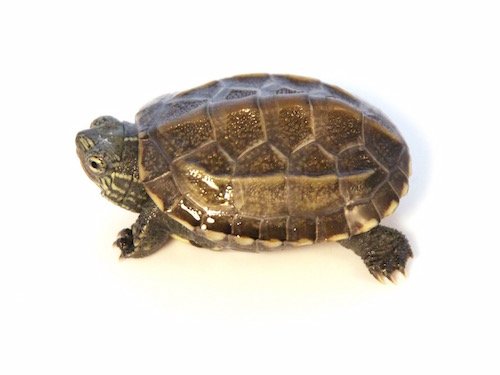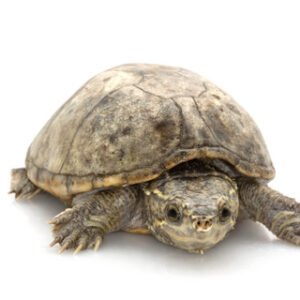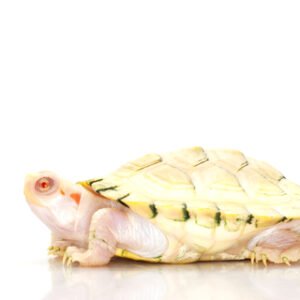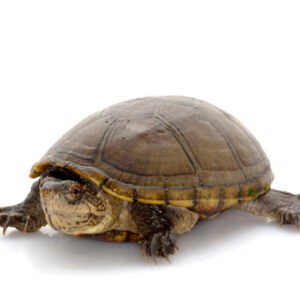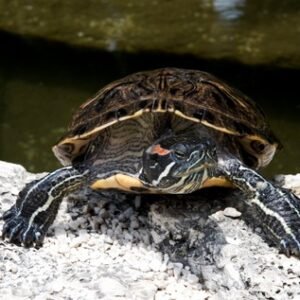Introduction to Reeves Turtles
Reeves turtles, scientifically known as Mauremys japonica, are captivating creatures that belong to the Family Geoemydidae. This species is renowned for its distinctive physical characteristics, most notably its striking patterns and coloration. The shell of a Reeves turtle typically features an olive to dark brown hue, often adorned with yellow or lighter shades, creating an eye-catching contrast. Their skin is generally gray or black, with intricate yellow lines that add to their attractive appearance, making them easily recognizable among other turtle species.
In terms of size, Reeves turtles are relatively small, usually ranging from 12 to 18 centimeters in shell length. Their moderate size, combined with their unique appearance, makes them popular within the pet trade, although responsible ownership is essential for their well-being. One significant physical characteristic is their slightly elongated neck, allowing them to reach for food more efficiently in their aquatic environments.
Geographically, Reeves turtles are native to East Asia and can be found predominantly in countries such as China, Japan, and Korea. Their distribution spans across various freshwater habitats, including rivers, ponds, marshes, and lakes. These environments provide the essential resources they need, including ample food sources and suitable basking areas. Understanding their natural habitat is crucial for conservation efforts, as habitat loss poses a significant threat to their populations.
The adaptability of Reeves turtles to different freshwater ecosystems showcases their resilience. They thrive in environments that offer both still and flowing waters, which allow for ample opportunities for foraging and nesting. As a species, the Reeves turtle exemplifies the intricate interconnections within its ecosystem, making it a key subject of interest in herpetological studies and conservation initiatives.
Conservation Status and Care of Reeves Turtles
Reeves turtles, native to East Asia, have been increasingly recognized for their conservation status, which is a reflection of the pressing threats they face in their natural habitats. The primary factors contributing to their decline include habitat loss due to urbanization, agriculture, and pollution. Rivers and wetland areas, which are crucial for their survival, are being drained or contaminated, diminishing available resources and breeding grounds. Additionally, the over-exploitation of Reeves turtles for the pet trade exacerbates the situation, leading to a decrease in wild populations.
In response to these challenges, various conservation measures have been implemented to protect Reeves turtles and their habitats. These include habitat restoration initiatives, legal protections, and captive breeding programs aimed at boosting population numbers. Organizations dedicated to wildlife conservation are actively working to raise awareness regarding the importance of preserving the natural environments where these turtles thrive. For instance, community-driven efforts to clean up polluted areas and educate the public about the ecological significance of Reeves turtles play a critical role in ensuring their survival.
For individuals interested in keeping Reeves turtles as pets, it is vital to emphasize that responsible ownership is key to both the well-being of the turtles and the conservation of wild populations. When caring for these turtles in captivity, owners must provide an appropriate habitat that mimics their natural environment. This includes a spacious enclosure with access to both water for swimming and a dry area for basking. Their diet should consist primarily of leafy greens, aquatic plants, and occasional protein sources, such as insects or commercial turtle pellets. Moreover, pet owners should ensure clean water and proper heating to maintain the health of their turtles, while being mindful of the impact that the pet trade can have on wild Reeves turtle populations.

